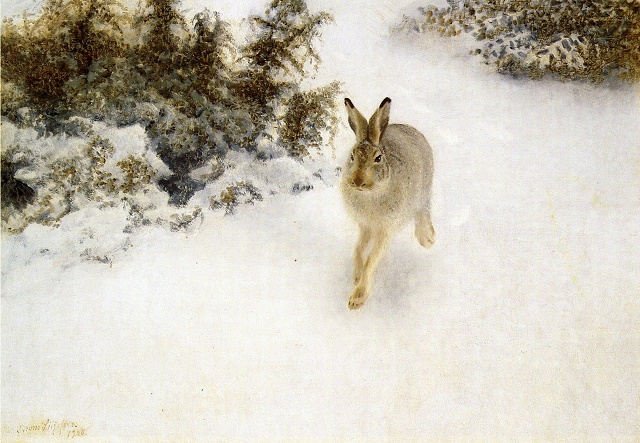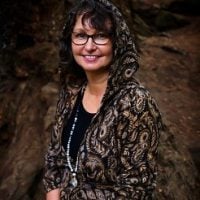
“I wonder if the snow loves the trees and fields, that it kisses them so gently? And then it covers them up snug, you know, with a white quilt; and perhaps it says, “Go to sleep, darlings, till the summer comes again.” ~ Lewis Carroll
{Winter Solstice, Northern Hemisphere: December 20 – 23}
.
Winter Solstice. Even the words evoke a certain mystical, magical feeling—a connection to the numinous.
Before I was a practicing solitary witch and following pagan practices, I was celebrating Christmas—which for me, is still a season to look forward to.
I like referring to Winter Solstice (and even Christmas) as a season, because to focus on one day of celebration seems rather indulgent and fleeting. The build-up, the care we take to prepare for a spiritually gratifying holiday and the gifts continue to inspire for days and weeks.
To sink into Winter Solstice is to anticipate that one darkest day of the year, to invoke our own darkness, to find joy in the nature-inspired decorations that are strewn around the house, and to feed our bodies with special recipes created from seasonal bounty.
A “season” gives us permission to not rush, but to simmer gently toward a climax, then descend with a grateful exhalation from the heady excitement of the actual day. A “season” is for mindfully engaging with the gifts of a sacred festival.
Pagans celebrate the turning of the Wheel of the Year by observing significant seasonal and agricultural occurrences. Within that wheel, there are four corner festivals all following the cycles of the sun, as it waxes and wanes in strength between summer and winter.
Witches also follow the cycles of the moon, with a monthly cycle, as opposed to a yearly one. All in all, these celebrations mirror our own human cycle of birth, life, death and re-birth.
Our ancestors found poignant wisdom in these seasonal festivities, as they pondered the mysteries of the universe around them. They understood humanity’s place in the macrocosm of the greater picture. Each festival was a marker of their connection to the planet they lived on and their spirituality.
The word “solstice” means “the standing of the sun” and describes the exact moment when the sun reaches its southernmost point from the earth’s equator (December), and its most northern point (June). In December, we experience the shortest day of the year, where darkness seems to overtake the light.
There is great spiritual meaning to the play of light and dark upon our bodies, our psyches and our beliefs.
Did you know that the Christian Christmas story of a son being born of a virgin is also found in many other religions? It is quite a common theme—an ancient theme to be precise—within the cultures of India, Egypt, Persia, Siam and China. The human attachment to the idea of a savior or guru is deeply embedded.
What is referred to as the birth of the “son” for the followers of religion is referred to as the birth of the “sun” within the pagan tradition. At Winter Solstice, the sun returns to its waxing journey through the sky, offering hope for the coming months where light will once again reign and provide warmth and sustenance in the form of new crops and livestock.
But is there more to the Winter Solstice meaning? What is even deeper and more profound than the physical aspects of how light is integral to the survival of humanity?
Since Summer Solstice, we have been drawing inward. We have been seeking our own darkness, falling into the mystery of our being, discovering what gifts there are in the underworld. During this period of resting and seeking, we can clearly see the fragility of human incarnation. Life is tenuous, precious and fleeting. We can examine our motivations, our dreams and our imperfections (or what we deem to be imperfections).
At Winter Solstice, we are born again. Jesus, a great ascended master, once taught about being born again, but I had misunderstood his meaning. What he was talking about was a spiritual awakening—a time when we fully understood our spiritual roots. We are spiritual beings having a human experience. “Remembering” who we were before we were born from the womb—infinite creatures—is to “be born again.”
When we are born again at Winter Solstice, along with the birth of the sun, we are born into our divine nature. We are the light. We are on a journey, just like the moon and the sun, cycling through the seasons—living, dying and re-birthing, finding meaning in our existence here on earth, and then shedding our mortal coil, recycling into new awareness, and perhaps returning if we like.
Anyone who knows me will tell you that Winter Solstice brings me great joy. I love the colors, the fragrance and the ritual of it all.
I love pulling up traditions—-baking, finding fresh greenery to decorate my home and gathering with family and friends. I love the music and all that it evokes in my tender heart.
But most of all, I love to connect with the sacred cycle of the sun’s progress through the heavens and delight in the mystery.
I like to meditate on my awakening as a spiritual entity. Winter Solstice reminds me of who I am, and that it’s so much more than the sum of the struggles I face, or even the joys. I am. That is what this season brings to light for me.
I wish you all a blessed Solstice and a blessed journey into your deepest self. Enjoy the darkness and revel in the light. For we are both—and it is good.
“Winter is the time for comfort, for good food and warmth, for the touch of a friendly hand and for a talk beside the fire: it is the time for home.” ~ Edith Sitwell
.
~
Author: Monika Carless
Image: Wiki Commons
Editor: Yoli Ramazzina






Read 0 comments and reply